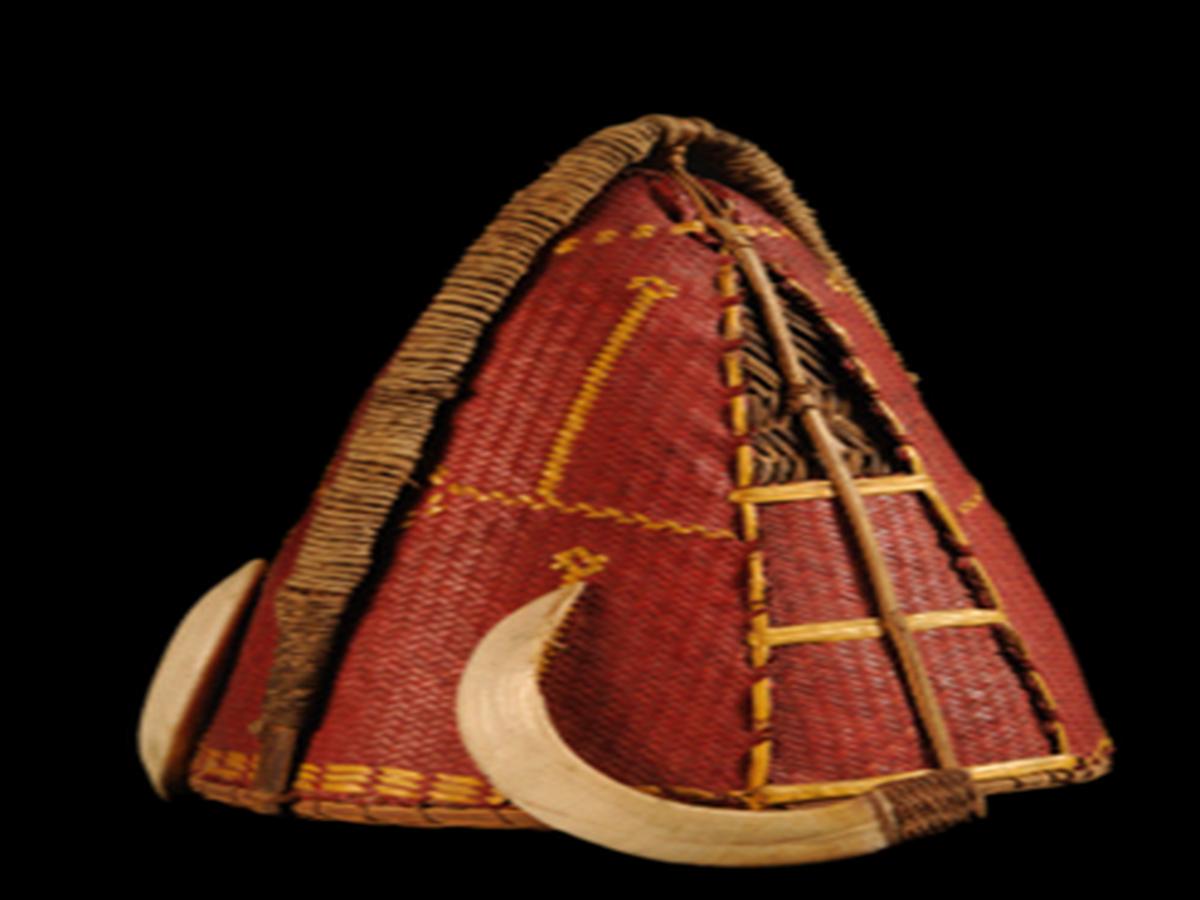State
Tribe Name
Art Type
short description
This Possesses exquisite cane helmet a Khiamniungan Naga tribe. This tribe was among the several vivid tribes of Nagaland, India. Kha Lein is a traditional headgear of the Naga warriors that combines utility, art, and culture. Made out of cane, it has a converging conical shape and fits comfortably in the head while being used as a protective instrument in tribal fights and ceremonial wear.Orchid skins intricately highlight the helmet with texture and sumptuousness. Red-colored strips of cane highlight the strength and courage prized among the Naga warrior clans.
Thumbnail

Filter Postion
Left
Filter Background
Off
Theme
Filter Header Image

content
Image

description
This Possesses exquisite cane helmet a Khiamniungan Naga tribe. This tribe was among the several vivid tribes of Nagaland, India. Kha Lein is a traditional headgear of the Naga warriors that combines utility, art, and culture. Made out of cane, it has a converging conical shape and fits comfortably in the head while being used as a protective instrument in tribal fights and ceremonial wear.Orchid skins intricately highlight the helmet with texture and sumptuousness. Red-colored strips of cane highlight the strength and courage prized among the Naga warrior clans.
Of course, a more significant feature has been added to the helmet: two boar tusks attached as trophies representing hunting skills, prestige, and warrior status within the tribe. These helmets were not merely for the cover but also emblematic of prestige, used in traditional festivals such as Tsokum and during dances, which glorify warriors and ancestors. In the culture where headhunting had once played a major part in the social structure, exhibits like these became visual stories of a warrior's journey and achievements. Now housed at the Indian Museum, Kolkata, this cane helmet speaks volumes on the craft heritage, identity, and legacy of the Khiamniungan tribe.
Of course, a more significant feature has been added to the helmet: two boar tusks attached as trophies representing hunting skills, prestige, and warrior status within the tribe. These helmets were not merely for the cover but also emblematic of prestige, used in traditional festivals such as Tsokum and during dances, which glorify warriors and ancestors. In the culture where headhunting had once played a major part in the social structure, exhibits like these became visual stories of a warrior's journey and achievements. Now housed at the Indian Museum, Kolkata, this cane helmet speaks volumes on the craft heritage, identity, and legacy of the Khiamniungan tribe.
Image Mode
landscape
promoted
On
Verified
Off
